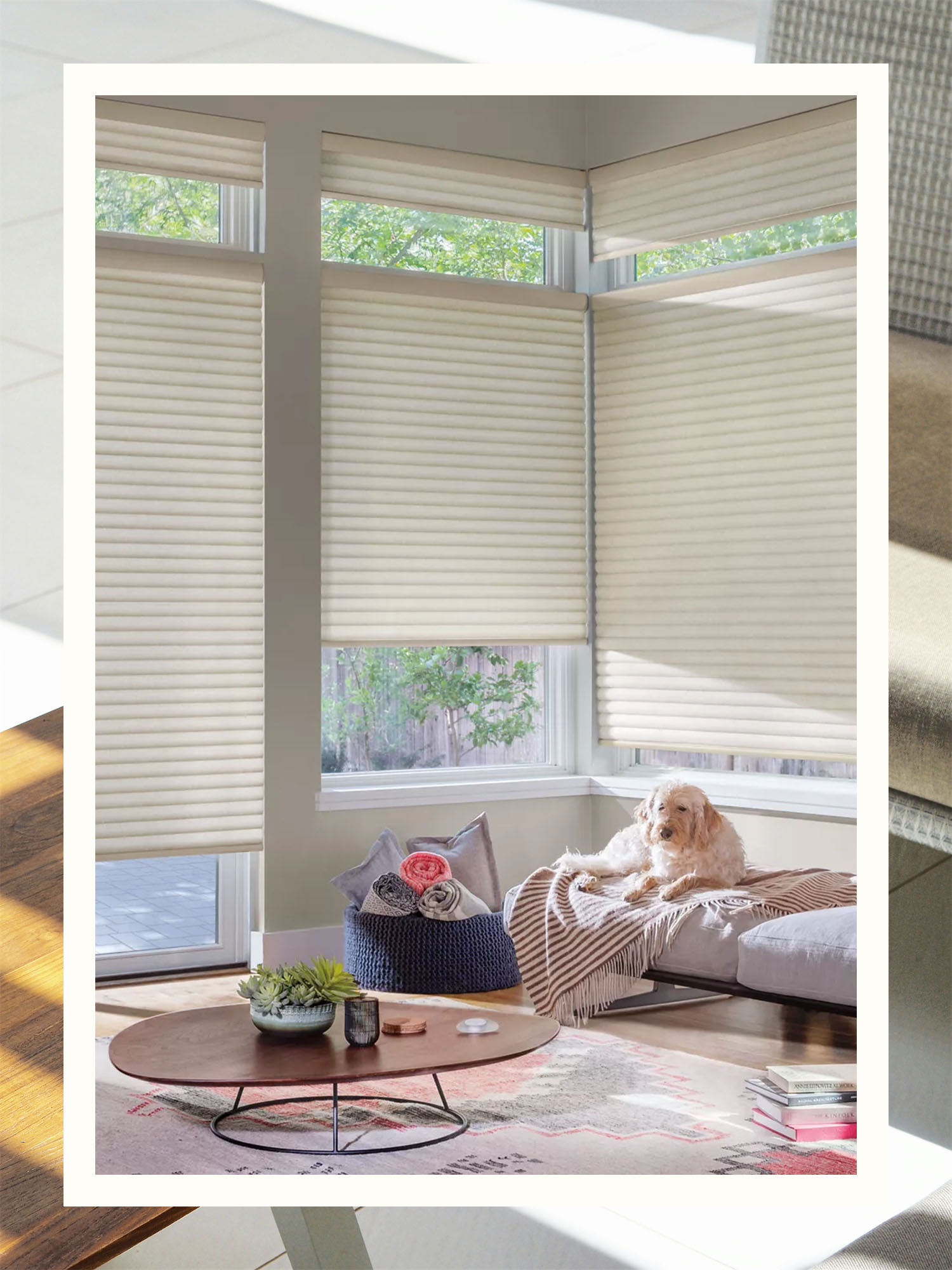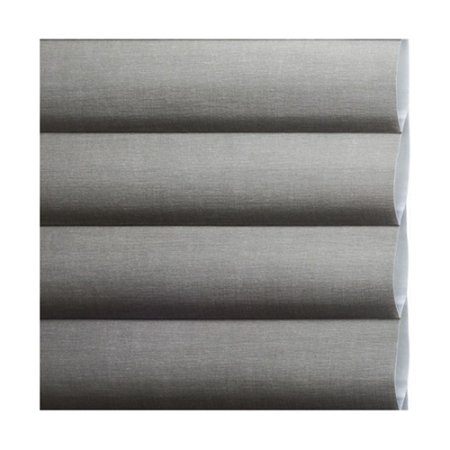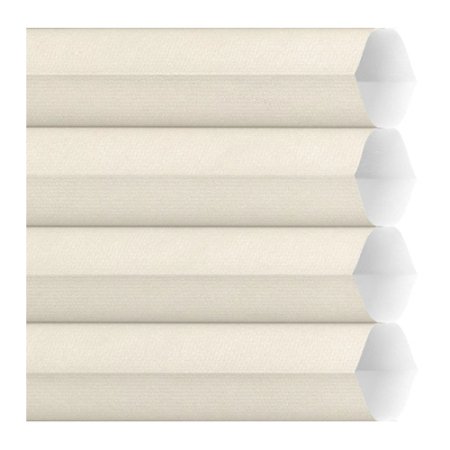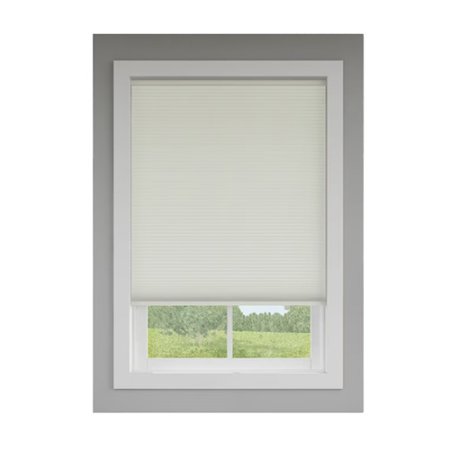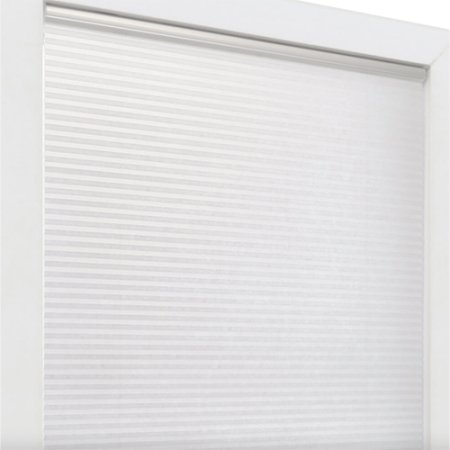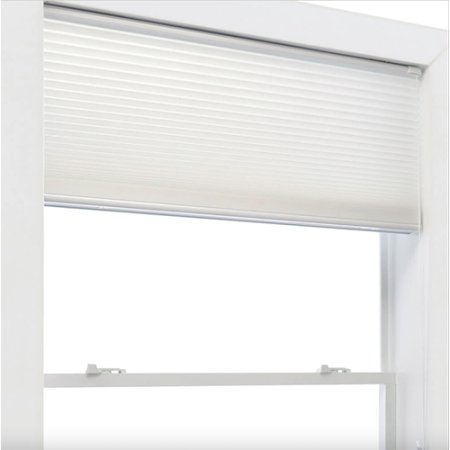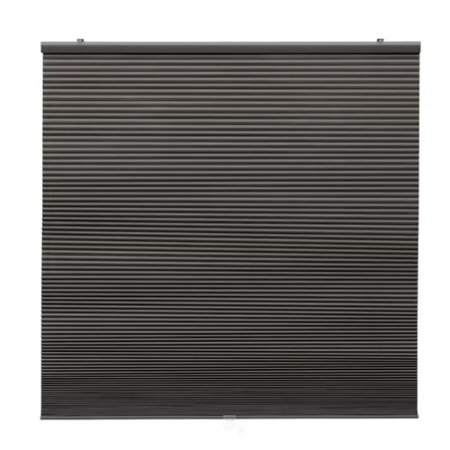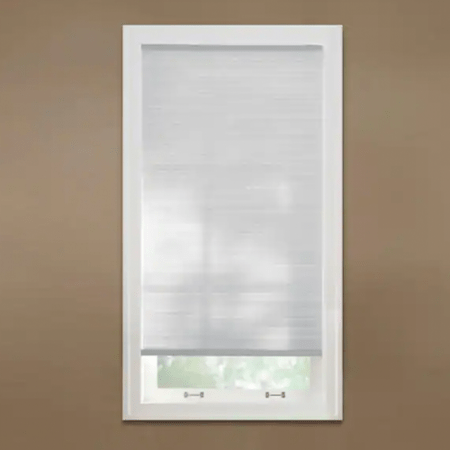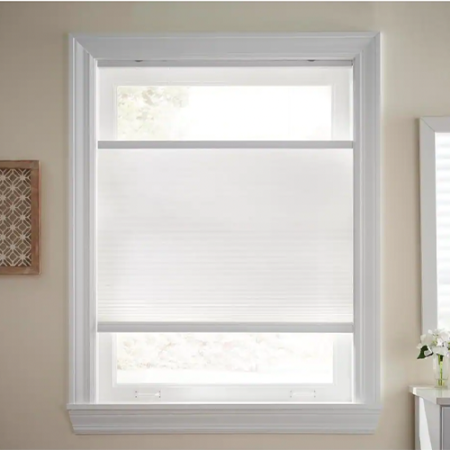We may earn revenue from the products available on this page and participate in affiliate programs.
Reading up on Domino’s shopping guides is like having your own personal product concierge. We do the tedious part—deep-dive research, hands-on testing, and tapping experts for advice—so all you have to do is hit “add to cart.” That’s why we call them Simply the Best.
Cellular shades can seemingly do it all where windows are concerned. Made of polyester, they feature stacked honeycomb cells that filter out noise and light—and they look sleek while doing it.
“The honeycomb cells create incredible insulation because air gets trapped in between, so it can keep a room warmer or cooler,” says interior designer Susan Davis Taylor. Example: In one of Taylor’s current projects, a Manhattan loft, the kids’ bedroom looks out at an ugly neighboring roof—but above that is a view of the skyline.
“We decided to do top-down honeycomb shades in that room because it blocks out the ugly view, but you still get the light,” the designer says. “With the top down, you get a beautiful city view.” (And no, the terminology isn’t a mistake: Top down means you can lower the shades from the top down, and bottom up means you can raise them from bottom to top.) Here’s everything else you need to know about cellular shades, and six top brands, before you add them to your cart.
Top Brands
The Shade Store
The Shade Store, an industry player that collaborates with designers like Sheila Bridges and Nate Berkus, stocks an extensive catalog of customizable shades, blinds, and drapes—and cellular styles are among them. Three different types, including light filtering, blackout, and day/night, can be customized; you can get them top down-bottom up, cordless, or motorized. Plus you can order as single- or double-cell and inside or outside mount.
Hunter Douglas
Barbara Elliott, an interior designer based in Stone Mountain, Georgia, is a fan of this stalwart window-coverings company. She finds that it offers a great variety of colors and control (including motorized options) and that the shades are reliable and sturdy.
Its Sonnette roller shades are semi-opaque and designed to diffuse light, while the Duette cellular shades offer more insulation and help with sound absorption, too. Plus they come in almost 150 colors and can be customized to fit different window shapes like arches and skylights.
Levolor
Levolor is backed by tons of positive consumer reviews for its quality, customization, and easy installation. (Lowe’s will custom-cut them to the correct width of your windows.) In the mix of cellular shades, it sits right in the middle from a price point perspective, making it a good overall bet for most people.
Blindster
One of Taylor’s go-tos for cellular shades is Blindster, maker of affordable and high-quality window coverings. The brand’s shades are very customizable, from the size to the type of mount and lift type (i.e., cordless or battery powered).
Its Deluxe light-filtering double cellular shades include two honeycomb cells stacked side by side, which ensure great insulation and light filtering. And the cordless light-filtering single cellular shade is a budget-friendly option. While only available in a cordless lift style, it offers a clean look, is easy to install, and provides insulation and sound absorption.
IKEA
IKEA’s cellular shades are some of the must affordable among the category, and that doesn’t mean they aren’t well liked or cheap. They range in size, color, and the amount of light they let in, all the way to blackout.
Home Depot’s Home Decorators Collection
Top-Down Bottom-Up Light-Filtering Cellular Shade, Home Depot
Shop NowHome Depot’s Home Decorators Collection brand is another reliable source for Taylor, with affordable shades that feel luxe and are a breeze to put in.
Its cordless light-filtering shade is available in a range of neutral hues like snow drift and parchment, and the cordless shade is made of small pleats for an unobtrusive, simple look. Home Depot will even cut shades to the width you desire in the store for free (even if you purchase them online). The brand’s top-down bottom-up light-filtering cellular shade provides light filtering and can open from the bottom or the top. This is ideal if you have a view you don’t want to obstruct or you’re trying to get more privacy during certain times of the day.
Shopping Checklist
Cellular Shades vs. Blinds
Cellular shades are specifically designed with honeycomb cells that work to keep out light and sound. Blinds, on the other hand, will simply block out light. Blinds are also made with horizontal slats while cellular shades are typically made of one piece of fabric. Cellular shades are considered to be safer for households with kids, as they don’t have a cord. While they might have a wand, cellular shades can often be purchased cordless and even motorized.
Cellular shades also fold up really small, says Taylor. “When you raise a roman blind, you still have a good 6 to 8 inches of it at the top when your window shade is all the way open. With cellular shades, it’s teeny-tiny, about 3 inches,” she adds. “So if you’re doing drapes with them, they just disappear.”
Installation and Operation
Most cellular shades give you the option of an inside mount or outside mount. Davis prefers an inside mount, which means the shade goes inside the window frame and therefore doesn’t cover the whole window frame. For this, you’ll need to measure the inside of the window exactly with a steel measuring tape.
Operating cellular shades is easy, too. Cordless shades simply raise and lower by a lip at the base of the shade. They can be adjusted to any point, so they don’t need to be all the way up or down. Some cellular shades can be installed so that they are top down, meaning you can drop the shade down and only expose the top half of the window (ideal if you need privacy from the street but want a skyline view, let’s say).
There are also motorized cellular shade options. “I love motorized shades, and I think it is definitely worth the cost—plus you don’t have to look at cords,” says Elliott. Motorized shades are great for a clean look and work nicely for tall windows where raising them manually just doesn’t make sense. Many motorized shades, too, are actually smart (like these from Hunter Douglas) and have automation features—perfect for “when you’re out of town and want to let light in for plants,” says Taylor.
Sound Absorption and Energy Efficiency
All cellular shades absorb sound. Some might do this better than others, depending on how the shades are constructed. For example, a double honeycomb shade will probably be more effective than a singular honeycomb shade—but even the singular one will still absorb sound, so it’s up to you to gauge how much sound protection you need.
To determine energy efficiency, blinds are measured by their R value, which looks at how much heat or cold they hold. The higher the R value, the better insulation they provide. These blackout shades by Blindster, for example, have an R value of 5.0, while these Blindster cordless, light-filtering shades have an R value of 3.5. Blinds that aren’t cellular shades usually have R values of 3.0 or less.
Light and Privacy
There are two types of cellular shades: light filtering and blackout. Blackout shades can be a darker color facing the interior but are often available in a range of neutrals and white on the side facing the street. These are made of a thicker material, which also means they keep more sound out. Some people prefer blackout shades for kids’ rooms and entertainment rooms (i.e., a home theater). Light-filtering shades, meanwhile, come in a variety of neutral hues that face the interior and usually with a white or cream on the exterior-facing side. Their opacity can vary, so it depends on how dark you want the room to be.
All cellular shades provide privacy when they’re covering a window, but they can be mounted in a way that allows for flexible privacy, too. For example, if you have windows next to your bathtub and don’t want the neighbors peeking in but still want to enjoy some natural light, install your shades so that they come up from the bottom of the frame, leaving the top of the window covered.
